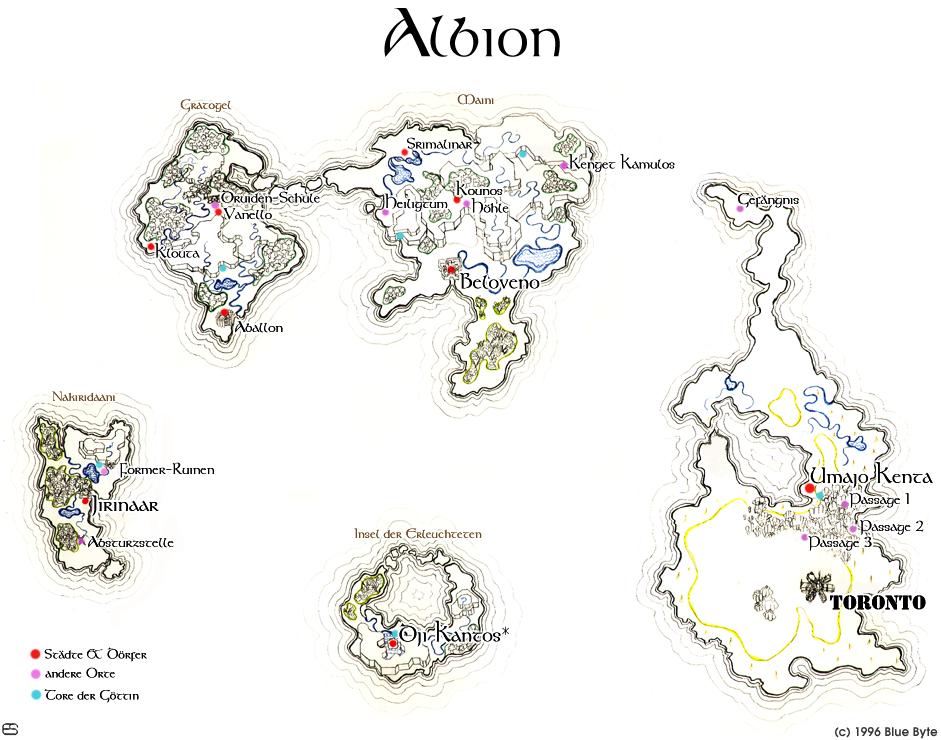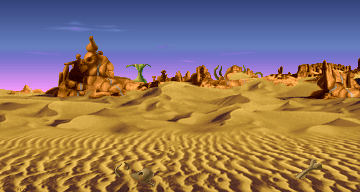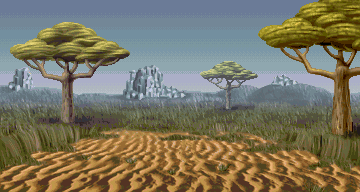I am wondering about this map, from the game Albion (not Albion Online):
 The island on the right (Umajo) is an arid one, mostly covered by sandy deserts, except for an area of savannahs at the very south (not pictured in this map). The other islands are either completely covered by tropical forests (i.e. the ones on the bottom and left-bottom). The rest is temperate climate/forests type, except for the peninsula in the middle of the image, under Beloveno, where jungles start to prevail. It mostly matches the northern hemisphere of Earth, except for the arctic and subarctic areas.
The island on the right (Umajo) is an arid one, mostly covered by sandy deserts, except for an area of savannahs at the very south (not pictured in this map). The other islands are either completely covered by tropical forests (i.e. the ones on the bottom and left-bottom). The rest is temperate climate/forests type, except for the peninsula in the middle of the image, under Beloveno, where jungles start to prevail. It mostly matches the northern hemisphere of Earth, except for the arctic and subarctic areas.
Now it seems weird to me that deserts formed on that island, though it's larger than the other islands (but the deserts span from coast to coast). I assume that the map uses the usual directions (right is east, top is north), thus the island lies in both the temperate and tropical zone, so it should be more akin to the other islands lying there. So my question is - what natural process could cause the formation of deserts on the island (and also the hot climate present there).
From what I know about this world, it is located in the same universe as the Earth, so same physics should apply. However, magic is also possible on Albion, but I'd rather look for a natural cause.
We also know that the planet has gravity about 0.8 G, and no axial tilt, leading to the complete absence of seasons on the planet. The revolution time is the same as Earth's, so it has the same length of the day and year. The atmosphere is also quite cloudy, but from from I observe from other artworks, the sky above Umajo is clear and cloudless. That may be the cause (or the effect?).
Edit: As human activity can be a factor in this, I have to clarify more about the population. The humans that live in this world are the descendants of the Celts originally having come from Earth ca 2000 years ago, and therefore I suspect that it's unlikely that deforestation created the desert. The other (and original) inhabitants of the world live in great harmony with the nature, and wouldn't willingly cause any deforestation in that area.
The age of the game also makes it a bit harder to express the exact relief of the island, but aside from a mountain/boulder ridge in the central area, the island is mostly flat.
To illustrate the nature of the island, here are some images:


